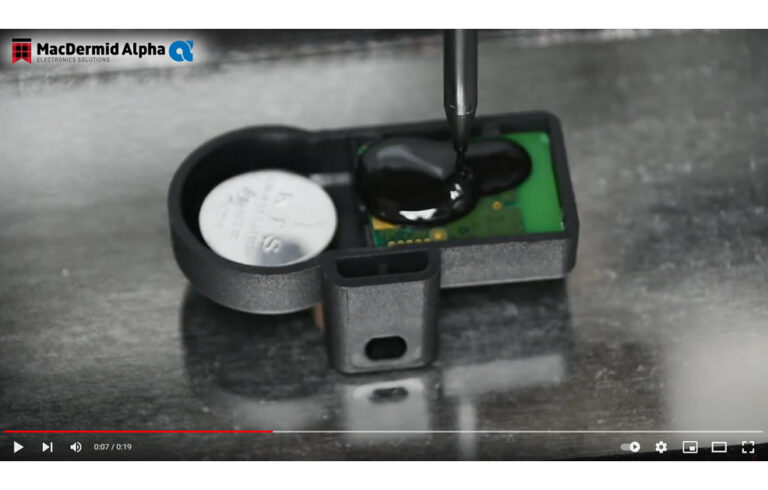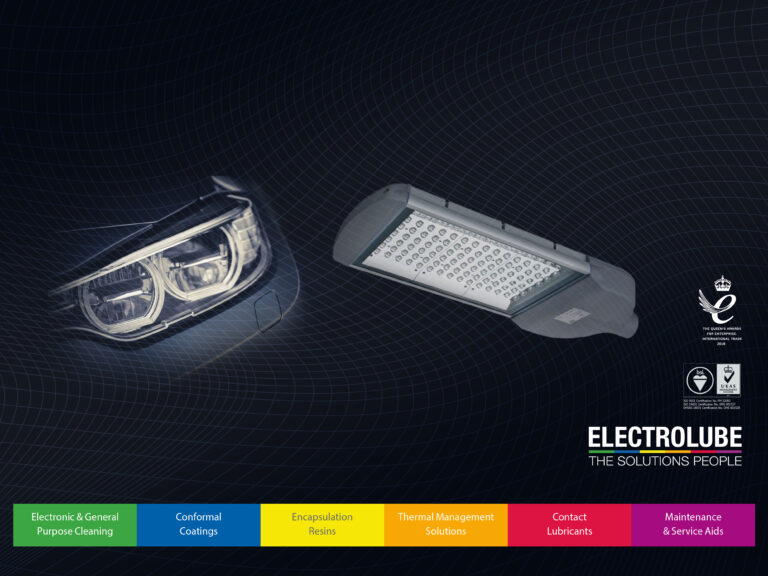In this months blog, I thought I would continue with my theme of five ‘Top Tips’ for circuit designers and manufacturers who seek to ensure that the in-service reliability and longevity of their electronic assemblies and products are fully addressed.
1. First, think very carefully about the sort of environment your PCB is likely to encounter. It is easy to ‘over-engineer’ a product in order that it will survive the very worst of conditions, but ‘worst conditions’ may only be fleeting or transient and therefore a resin solution with a lower temperature performance specification will often cope. Take temperature extremes, as an example; your application may experience occasional temperature spikes of up to 180°C, which you might feel deserves treatment with a special resin. However, such excursions may only be short-lived; under ‘normal’ operating conditions, the PCB might only be subjected to a maximum temperature of, say, 120°C, opening up a wider choice of resin types and methods of application.
In a similar way, the required chemical resistance of your chosen resin will depend on the duration and/or extent of the chemical contamination. For example, there is a considerable difference in terms of the extent of chemical damage between a thin layer of a contaminating chemical on the resin surface that is wiped off within five minutes, and 500ml of chemical present on the resin surface for one hour or more – let alone complete immersion! Furthermore, the range of chemicals that a PCB might eventually be exposed to is often quite limited, and almost certainly not the broad range that is frequently listed at the design stage, just to be on the ‘safe side’.
2. Environmental factors that normally affect a PCB are temperature, chemical attack, physical shock (vibration) and thermal shock; the trick is to decide which of these is likely to have the greatest impact upon your PCB and then concentrate on making an appropriate resin choice. Each of the three main resin types (epoxy, polyurethane and silicone) has its strong points, as well as weaknesses.
Silicone resins have the broadest continuous operating temperature range of any of the resin chemistries, so are a natural choice for both high and low temperature applications, as well as those subject to thermal shock. They also maintain their flexibility over this temperature range with very little sign of degradation over time. On the downside, silicones have poor adhesion on certain substrates and their chemical resistance is not as good as that provided by an epoxy resin.
As well as having excellent chemical resistance, epoxies provide good temperature performance. However, due to their rigid nature, epoxies are not so good at protecting against physical shock. Polyurethanes, on the other hand, have excellent moisture and physical shock resistance, but deliver poor high temperature performance. As a result, polyurethanes are best restricted to applications operating in the -40 to +120°C region. They do, however, provide similar levels of flexibility and better adhesion to many substrates compared with silicones – and at a lower cost.
3. Where the PCB is mounted in an enclosure, into which resin is poured to fully encapsulate it, the material that the enclosure is made from needs to be taken into consideration. In the case of plastic enclosures, these are normally injection moulded, so there might be traces of release agent on the surfaces which will result in poor resin adhesion unless the agent is removed beforehand. Some plastics are very moisture sensitive, and are likely to undergo dimensional and other physical changes in humid conditions, which will impose physical stresses on the enclosure, the encapsulation resin, the PCB and the components. Where the enclosure is made from steel, aluminium or other metals, then the differences in the coefficient of thermal expansion between the enclosure and the resin will have to be taken into account, as well as the surface treatment used, which might affect the adhesion of the resin.
4. Typically, the thicker the resin layer, the better the level of protection; however, unless all of the components on the PCB are of a uniform height, then the thickness of the resin layer will vary across the board, and potentially slightly different levels of protection will be provided for individual components. Good board design and component selection will go a long way towards mitigating this type of problem, but the thinnest resin layer must be assumed to be the level of protection offered across the board. Naturally, with the desire/need to reduce weight and/or volume, designers are inclined to reduce the amount of resin applied. Nonetheless, the expected service life needs to be factored in, with thicker layers generally providing better long term protection.
5. Just remember, before you even consider resin encapsulation or potting, the PCB needs to be thoroughly cleaned. Surface contamination can have a negative impact on the protection levels offered by encapsulation, particularly in cases of chemical resistance (as it provides an easier route for chemicals to penetrate). In addition, contaminants will adversely affect the resin’s ability to absorb physical and thermal shocks due to the weak layer formation between the resin and the PCB, which ultimately leads to delamination. Of course, after cleaning, any solvent or cleaning solution must be removed and the PCB needs to be thoroughly dried prior to resin application.
By paying attention to these basic design pointers, you are likely to achieve the levels of reliability and long service life that will ensure long and happy relationships with your customers!










